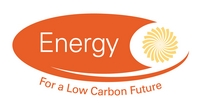Electricity Distribution and Intelligent Infrastructure - Systems Integration and Architecture Development (WP2.4) Final Report
Abstract:
The Plug-in Vehicle Economics and Infrastructure Project is a core element of Electrification of Transport within Test Bed UK. The ETI will utilise the outputs of the project to support, inform and facilitate effective long-term benefits from the investments being made around the UK. The two primary objectives are:
- Evaluate the potential role and economics of plug-in vehicles in the low carbon transport system: generate a quantified understanding of the market potential, cost models and carbon benefits case under defined scenarios of infrastructure investments, government intervention packages and finance model options across a number of key plug-in vehicle type/size/capability points; and
- Develop the technology tool-kit for delivering an intelligent infrastructure: create a verified open interoperability architecture and generate information to aid infrastructure planning (e.g. to indicate how many recharging points are needed and where they should be located, what mix of power levels are required, how the impact of plug-in vehicle recharging on the electricity distribution network should be managed, how the overall system can be simplified for consumers, etc).
The purpose of this deliverable was to develop an open architecture (i.e. system design requirements) for recharging infrastructure to enable the system to be operated and managed effectively while also enabling compatibility between different business models. This deliverable provides an overview of the stages of analysis. The details for each stage of analysis are documented in the separate appendices.
Document Structure:
- Executive Summary (also available as a separate document)
- Section 1: Introduction
- Section 2: Infrastructure Requirements
- Section 3: Business Design
- Section 4: System Design
- Section 5: Realization
- Appendices (in separate documents)
- A - supporting Section 2 (Infrastructure Requirements)
- A1: Intelligent Infrastructure Requirements
- A2: Intelligent Infrastructure Standards Requirement
- B -supporting Section 3 (Business Design)
- B: Conceptual Business Architecture
- C - supporting Section 4 (System Design)
- C1: Conceptual Application Architecture
- C2: Conceptual Data Architecture
- C3: Conceptual TechnicalArchitecture
- D - supporting Section 5 (Realization)
- D1: Plan for Architecture Realisation
- D2: Standards Gap Assessment Report
- D3: Delivery Phases, Options, Costs and Risks
- A - supporting Section 2 (Infrastructure Requirements)
Publication Year:
2011
Publisher:
ETI
Author(s):
Parker, S. and Baker-Brian, N.
Energy Category
Class Name:
Subclass Name:
Category Name:
Language:
English
File Type:
application/pdf
File Size:
1351741 B
Rights:
Energy Technologies Institute Open Licence for Materials
Rights Overview:
The Energy Technologies Institute is making this document available to use under the Energy Technologies Institute Open Licence for Materials. Please refer to the Energy Technologies Institute website for the terms and conditions of this licence. The Information is licensed "as is" and the Energy Technologies Institute excludes all representations, warranties, obligations and liabilities in relation to the Information to the maximum extent permitted by law. The Energy Technologies Institute is not liable for any errors or omissions in the Information and shall not be liable for any loss, injury or damage of any kind caused by its use. This exclusion of liability includes, but is not limited to, any direct, indirect, special, incidental, consequential, punitive, or exemplary damages in each case such as loss of revenue, data, anticipated profits, and lost business. The Energy Technologies Institute does not guarantee the continued supply of the Information. Notwithstanding any statement to the contrary contained on the face of this document, the Energy Technologies Institute confirms that it has the right to publish this document.
Further information:
N/A
Region:
United Kingdom
Publication Type:
Subject:
Theme(s):
Transport - Light Duty Vehicles
Related Dataset(s):
No related datasets
Related Project(s):
PIVEI: Large Scale Consumer Trial S1 SP2 - Electricity Distribution and Intelligent Infrastructure



